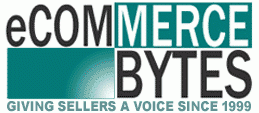 Some sellers are concerned about an upcoming change on eBay that is part of its Fall Seller Update. The mandate states: “Starting September 15, 2018, you will be required to use secure HTTPS content when you list items on eBay based on Google’s HTTPS mandate.” We consulted with a couple of experts after receiving a letter from a reader looking for advice on how to handle his non-secure photo links.
Some sellers are concerned about an upcoming change on eBay that is part of its Fall Seller Update. The mandate states: “Starting September 15, 2018, you will be required to use secure HTTPS content when you list items on eBay based on Google’s HTTPS mandate.” We consulted with a couple of experts after receiving a letter from a reader looking for advice on how to handle his non-secure photo links.
The reader explained that he hosts photos on his own website for use in his 1,000-plus listings as well as in his listings on eBay. However, his website is not HTTPS secure – a problem given the new mandate.
The reader created his site 10 years ago, but, he said, “I do not have the time, energy or knowledge to rewrite the entire site for https. Just the links alone would be a huge task.”
“Could you, would you (PLEASE) do an article on our alternatives? I am looking for an eBay listing site or photo hosting site, but there are so many, and it’s hard to tell if they will provide a direct link for each photo for inclusion in eBay listings, as I currently list on eBay with TurboLister. I sell the same items continuously, so I am looking for a one time fix.”
To understand what’s changing, here is eBay’s announcement from the Fall Seller Update:
Use secure HTTPS for enhanced browser security
As we previously announced, the Google Chrome browser now displays the message “Not secure” in its address bar when users visit HTTP pages or HTTPS pages that include non-secure HTTP content. Starting September 15, 2018, you will be required to use secure HTTPS content when you list items on eBay based on Google’s HTTPS mandate. “New,” “relist,” “sell similar,” and “sell one like this” listings created with non-secure HTTP content will not successfully submit.
Current and revised listings with non-secure HTTP content will be displayed as “Not secure” to buyers in the Google Chrome address bar. To ensure the most secure shopping experience for your buyers, we recommend that you update your listings now. Check here to see if you have any noncompliant existing listings that need to be updated.
Learn more about HTTPS security.
The first expert we consulted is John Solcum of SixBit Software, and he has a very long history with eBay selling tools.
He said our reader isn’t really in as bad a shape as he thinks he is – all he needs to do is get an SSL Certificate for his site, he said. “If the site is hosted, the hosting provider can provide them with this. If they host the server themselves, there are a lot of resources on the web to help them set up their own SSL Certificate.”
Once his site has an SSL certificate, it means his pictures are accessible from either HTTP or HTTPS, Slocum said. “That means that http://mysite/myimage.jpg and https://mysite/myimage.jpg will both get them to the same picture. All the seller would have to do then is to make a change to all of their links on eBay.”
Slocum said SixBit has already helped its users get SLL certificates for their sites. “We then performed a quick one-time operation to change all their http links to https. If a new user wants to do this, they would just get SixBit, import all their eBay items, implement the SSL certificate, then contact us for the one time update to their links.”
The second expert we consulted is Ship, aka Shipscript, a longtime developer of eBay tools on ISDNtek.com whom we’ve consulted on similar issues such as eBay’s changes around “active content.”
Ship agreed with SixBit’s John Slocum: “My advice to that seller would be to purchase an SSL certificate for their existing website. Applying a certificate does not require rewriting any pages.”
And while Ship said the setup is handled at the root, meaning a novice might not have the skills to set it up, “SSL requirements are now so ubiquitous that the major webhosting companies all offer installation of SSL for a nominal fee and a small annual renewal.”
“I had my small local ISP install a free (no renewal fee) SSL certificate after eBay recommended the open source SSL tools at https://letsencrypt.org. (Also see the second post on this thread on the eBay boards.)
“With the certificate applied to the site, the seller should then be able to use eBay’s Bulk Edit And Relist (BEAR) tool to change the “http:” protocol to “https:” across all listings, and have the problem solved.”
Some sellers might be tempted to look at photo-hosting sites as our reader had discussed doing, but Ship doesn’t recommend this for a number of reasons:
“Since that seller already has a website, I do not recommend going backward to other image hosting services. The “free” photo hosting services out there that previously supported eBay sellers now change a fee because eBay no longer allows the monetizing links that those hosting services added to their photo code.
“Additionally, most supply only randomly named photos, so there would be no wildcard method of replacing old names with new. Instead, each photo would need to be individually replaced.”
Ship also warned that many free sites including Flickr and Imgur actually block hotlinking from an eBay listing. In addition, “Most of the eBay Listing services out there will host photos, but again, there may be the same problem that old listings would each require a manual edit to change out the photo URLs” – so check in advance.
Another thing Ship noted: “If the photos in the description are just duplicates of what eBay is hosting at the top of the listing, I recommend using eBay-hosted photos from the top of the listing down in the description. eBay’s URLs can be obtained during the listing in most cases, or can be collected after the listing goes live by using this online tool or this photo gallery tool.”
Since the reader has active listings on his own website, the experts say it makes sense for him to ask his hosting service about getting an SSL certificate. And as Ship warns, free photo-hosting sites may not allow you to link to your photos from your eBay listings, or may charge you fees for doing so.
Any way you look at it, there’s some work involved in getting HTTP-hosted photos to be HTTPS compliant, but it may not be as daunting as you think – and there are resources out there to help.
And for eBay sellers like our reader who also sell directly on their own websites, getting an SSL certificate could prove to be a boon for their own listings, a byproduct of eBay’s mandate.




I also found this eBay help page that looks helpful.
https://pages.ebay.com/seller-center/listing-and-marketing/browser-security-standards.html
I went through and revised my 400 to 500 listings months ago when eBay first threatened us with the whole ‘https’ thing. However, I’ve lost count as to how many times I’ve logged into their site and found it unsecured. And that’s how hackers are getting into our eBay accounts. For a site that’s just a selling venue they have way too much power and it’s scary.
Can someone please clarify what this means?
I upload my photos to my computer and then I upload to eBay……NO GOOD NOW?
I have a website blog that is HTTPS……..Now I have to upload my photos to my hosting?
so then ok if it is on my hosting….how do I get that image with the HTTPS onto ebay?
Can someone explain this in detail. Thanks
More than likely you are using ebay picture services to host the images. If that’s the case then you are already good to go as they would manage all of the settings mentioned here.
I still use Turbolister, loading the photos from my computer. Am I going to have a problem with this change? Thanks
Https is nothing but a huge money grab.
Any site that NEEDS https uses it..such as any site that stores personal information or transmit purchase data.
Images sites DO NOT NEED https especially personal image sites.